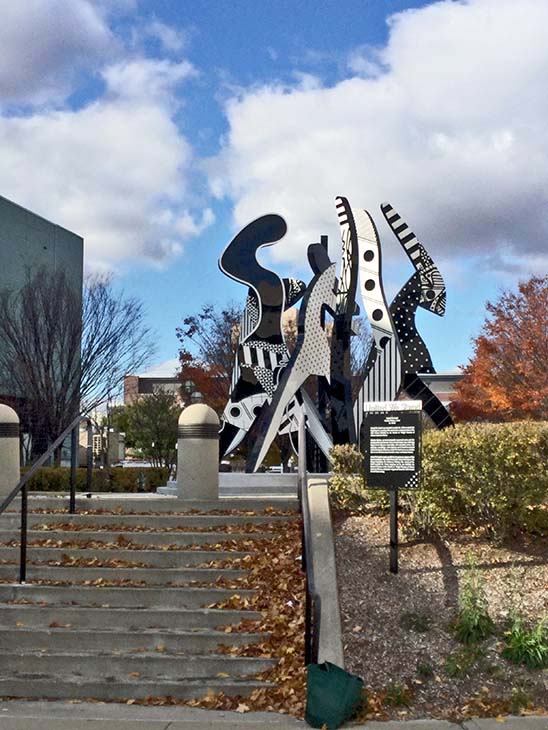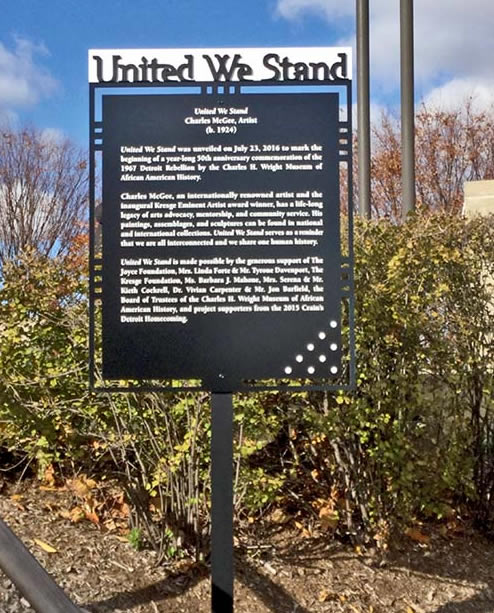

The Charles Wright Museum plans a commemoration of the fiftieth anniversary of the violence that occurred in Detroit in July, 2017. There was a vacant plaza near the Farnsworth entrance to their impressive building. For some time, the administrators sought an appropriate work of art for this location. With financial assistance from the Kellogg Foundation, the Joyce Foundation and generous individuals, the museum raised $175,000 for this sculpture. Then they commissioned a work from Detroit sculptor, Charles McGee.
McGhee, who was born in 1924 on a sharecropper’s farm near Clemson, South Carolina; came to Detroit in the early 1930s. He had not attended school in the South but did so in Detroit. He enlisted in the Marine Corps and eventually was dispatched to Japan. Upon return to Detroit, he went to work for Briggs Manufacturing. From 1947 to 1957, he studied with Guy Palazzola at the Society of Arts and Crafts. That is the organization that later transformed itself into the College for Creative Studies after World War II. From 1969 to 1974, he ran his own institution: the Charles McGee School of Art. He also taught art at Eastern Michigan University. His major pieces on public display are “Lineage” on the campus of Eastern Michigan, a sculpture in the Broadway Station of the Detroit People Mover entitled “The Blue Nile” and an installation in the William Beaumont Hospital in Royal Oak called “Progression.” Three of his paintings are on display in the Detroit Institute of Arts including: “Noah’s Ark: Genesis” and “Untitled.” In the late 1979, he was one of the founders of the Contemporary Art Institute of Detroit.
“United We Stand” includes seven soaring figures engaged in an exuberant dance. The sculpture soars to 25 feet in height. The polychrome steel that McGhee chose for this work is painted in black and white geometric patterns and shape. Perhaps the sculpture reminds us of Detroit’s vibrant musical history and of a possible future of racial accord and harmony. I believe he described his work as portraying the idea of the power of togetherness. Personally, I think that it is a tribute to Charles McGhee that he was able to execute this work at the age of 91.
Sculptor: Charles McGee
Materials: Painted polychrome steel
Date of installation: July 23, 2016
Use in 2016: Public Art
City of Detroit Designated Historic District: Not listed
State of Michigan Registry of Historic Sites: Not listed
National Register of Historic Places: The Charles H. Wright Museum is near, but not formally within, the Cultural Center Historic District.
Photograph: Ren Farley; November 10, 2016
Description prepared: November, 2016
Return to Public Art and Sculpture
Return to Racial in Detroit’s History
Return to Homepage